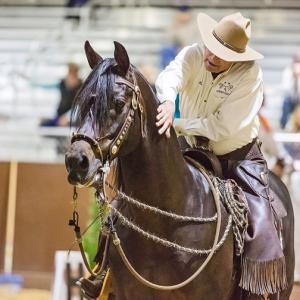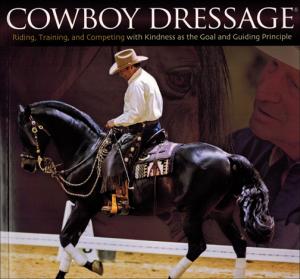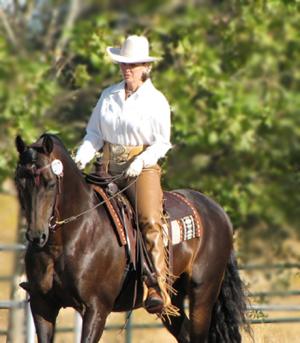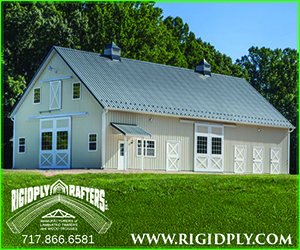“Dressage methods are applicable to all horse disciplines. They emphasize slow steady progress to a solidly trained horse.”
Book Review by Nancy Brannon
While Cowboy Dressage, by Jessica Black, is written specifically to explain and describe the new discipline of Cowboy Dressage, and distinguish it from Western Dressage, the training principles herein apply to all riding disciplines and all breeds. It is even applicable to gaited horses, too. The discipline began with Eitan Halachmy and he continues to be the primary promoter of it.
From a moment when he was five years old and sat on a horse for the first time, Eitan Halachmy knew he was addicted to horses. “They are a magnet,” Eitan states. “They always pull you back.”
Known as “8” to his friends, Eitan was born in Rishon LeZion, a small town south of Tel Aviv in Israel, where one grandfather had been a horseman and another had made carriage wheels. In his childhood, horses were considered a luxury, as donkeys and mules served as transport. He made tentative friendships with the Arabs because he wanted to learn about horses from them. But he found they knew little about horsemanship. His lifelong goal was always to include horses in his daily life, and Eitan found his love for horses could translate into horsemanship based on the guiding principle of kindness.
He got his first introduction to classical dressage when he traveled to Vienna in 1965. “His daily observations at the Spanish Riding School introduced Eitan to the reality of classical riding,” and the “Spanish Riding School fueled Eitan’s thirst for knowledge about training…”
It was when Eitan started working with Holiday Compadre, who would become Morgan World Champion Western Pleasure Horse in 1993, that he realized the importance of the partnership between horse and rider. Eitan spent long hours and many days working with the difficult horse. His time spent working with the horse was an investment that would pay off again and again in years to come.
Wolf Creek Ranch in Grass Valley, California is home to Eitan and Debbie Beth-Halachmy and the birthplace of Cowboy Dressage. “You can do Cowboy Dressage with any horse, anywhere” and is open to all breeds and all levels of riders. Eitan’s goal is to give people the means for better communication with the horse, beginning with groundwork. “Cowboy Dressage is the harmonious, subtle, and relaxed flow of information between horse and rider. This harmonious flow is termed Soft Feel.”
The guiding principles of Cowboy Dressage are kindness and patience, and the central tenet is: Be kind to your horse. No one, horse or person, learns effectively when the teaching method relies on pain or punishment.
The philosophy of Cowboy Dressage is summarized by: Soft Feel, lightness, kindness, and partnerships. A good rider communicates with the horse with both cues and aids. But too much “bumping” with your legs will deaden the horse’s sides; too much bumping the horse’s mouth with the rein and bit will deaden the mouth. Eitan prefers touch and release rather than steady pressure. The first reward should always be the relief from pressure. Even the seat should be used lightly; the horse can feel the slightest shift of the hips.
The book goes into great detail describing cues and aids; the Western saddle; the bridle, hackamore and other headstalls; bits; and choosing a horse that suits your level of ability and has a good work ethic. There are a variety of breeds that are amenable to Cowboy Dressage, and there’s even a division for Gaited breeds, Mustangs, and Mules.
There’s a chapter on equine behavior, the nature of the horse, instincts, and the critical learning periods in a horse’s life. There’s emphasis on Dr. Robert Miller’s imprint training. “There is one thing we should agree on when it comes to training a horse: punishment does not work.” There is clear explanation of Classical and Operant Conditioning. Classical conditioning was made famous by physiologist Ivan Pavlov with his dogs salivating to the sound of a bell (conditioned response). In classical conditioning, animals learn through association. In operant conditioning, they learn through consequences to behavior. Both methods are used in training a horse, and most horses learn skills through a mixture of both.
Like several other training approaches, emphasis on beginning groundwork is a valuable foundation for Cowboy Dressage. There’s a chapter devoted to extensive explanation of ground work, leading to the first mounting of the horse. Once mounted training begins, the first most important lesson the horse must learn is to move forward freely. This chapter explains the important foundation training that the horse must learn before progressing further.
The next step is engagement, a prerequisite to impulsion. Engagement is carrying power, whereas impulsion is pushing power. Engagement refers to the manner in which a balanced horse brings his hind legs under his belly to move forward off his hindquarters efficiently. Engagement is the basis for a horse’s impulsion – the energy with which a horse moves forward. This next stage of learning involves developing the gaits; transitions between gaits; stopping; lateral work like turns on the haunches and turns on the forehand; moving ultimately to collection and self-carriage. Self-carriage means the horse can perform all maneuvers while maintaining his balance and frame, with light contact. The last part of the forward motion and engagement chapter explains straightness and bending, the way a horse’s body flexes laterally to follow a curve. Here, again, lateral work such as shoulder-in and shoulder-out are good exercises to supple the horse.
Western Dressage is very similar to Cowboy Dressage because of their shared origins. Both seek to combine the best of the Western Cowboy tradition with classical dressage; both focus on training that takes into consideration the horse’s nature. Probably the biggest differences are seen in the tests. Western Dressage has an arena with tests that are very similar to classical dressage competition. Cowboy Dressage has created a 20 x 40 area called a court, with patterns scaled to the movements of Western horses.
The last chapters of the book explain the Cowboy Dressage Court, the Cowboy Dressage Tests, types of competitions, and judging Cowboy Dressage competitions. Do you know the origins of the dressage arena and how the letters came to be? For example, all tests begin (usually) with Enter at A. A stands for the German work Ausgang, meaning exit. K is for Kaiser (King); V is for Vassal; R is for Ritter (Knight). [read the full description on page 118] The Cowboy Challenge Court is also diagrammed and explained, and it resembles a combination of Trail Class and Dressage. Like Classical Dressage, Cowboy Dressage Competition tests are designed to provide a measure of the horse’s training progress. They start simply and increase in complexity.
Some fascinating information about the “traditions” that form the historic background for Cowboy Dressage, such as Vaquero, La Jineta, La Dorma Vaquers, and La Garrocha, are found in Chapter nine. As with nearly all other horse training methods, the methods of classical dressage are traced to Xenophon’s The Art of Horsemanship, written around 350 B.C. The true value of dressage training lies in the step-by-step method of building a horse from the ground up.
Finally a word on collaboration – Cowboy Dressage’s niche in the broader world of expert horsepersons, who include Jack Brainard, Dr. Robert Miller, Lester Buckley, Art Perry, and Sheila Varian. All are proponents of the Light Hands Horsemanship training method.
Throughout the book there are stunning photos of horses that anyone would desire to ride. They are shown balanced, soft, and in harmony with the rider. Find more information about Cowboy Dressage at: www.cowboydressage.com









